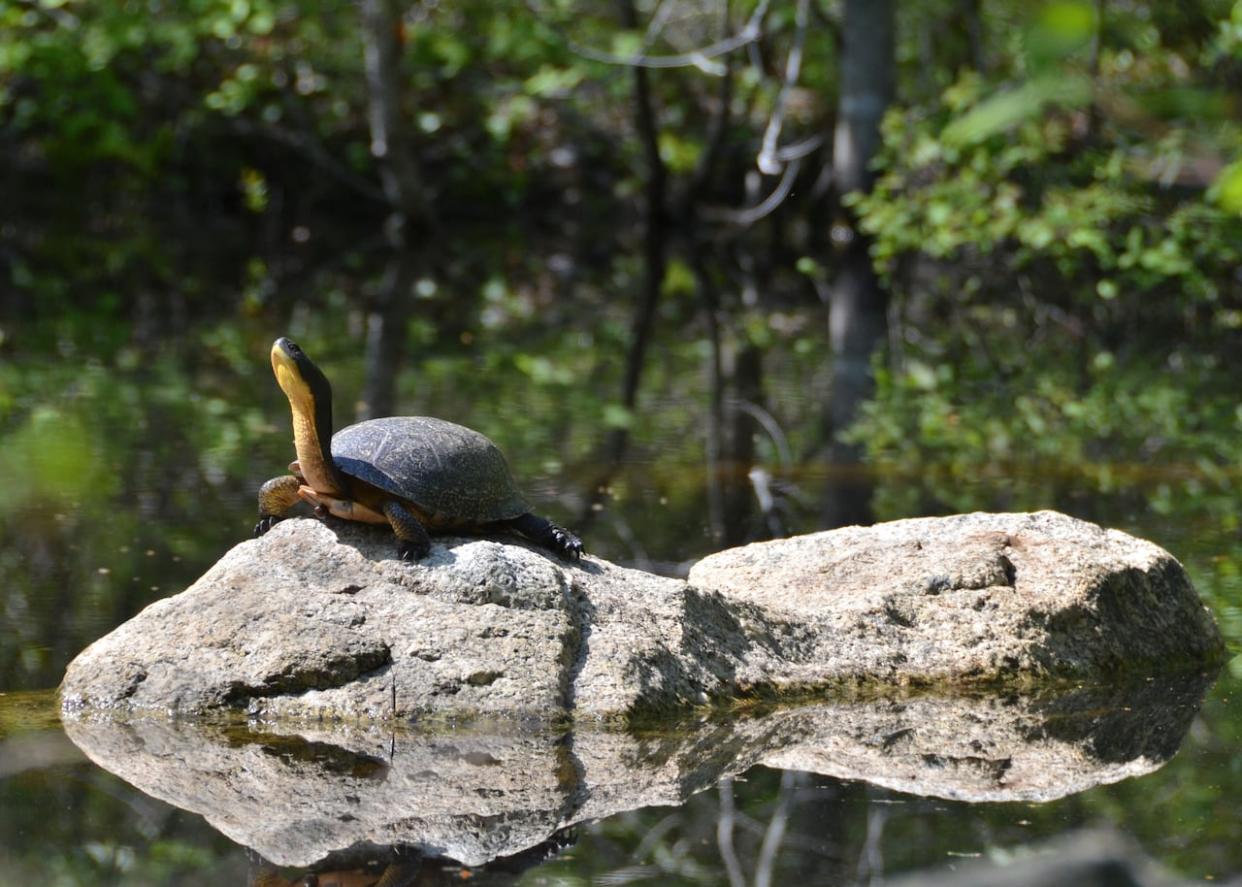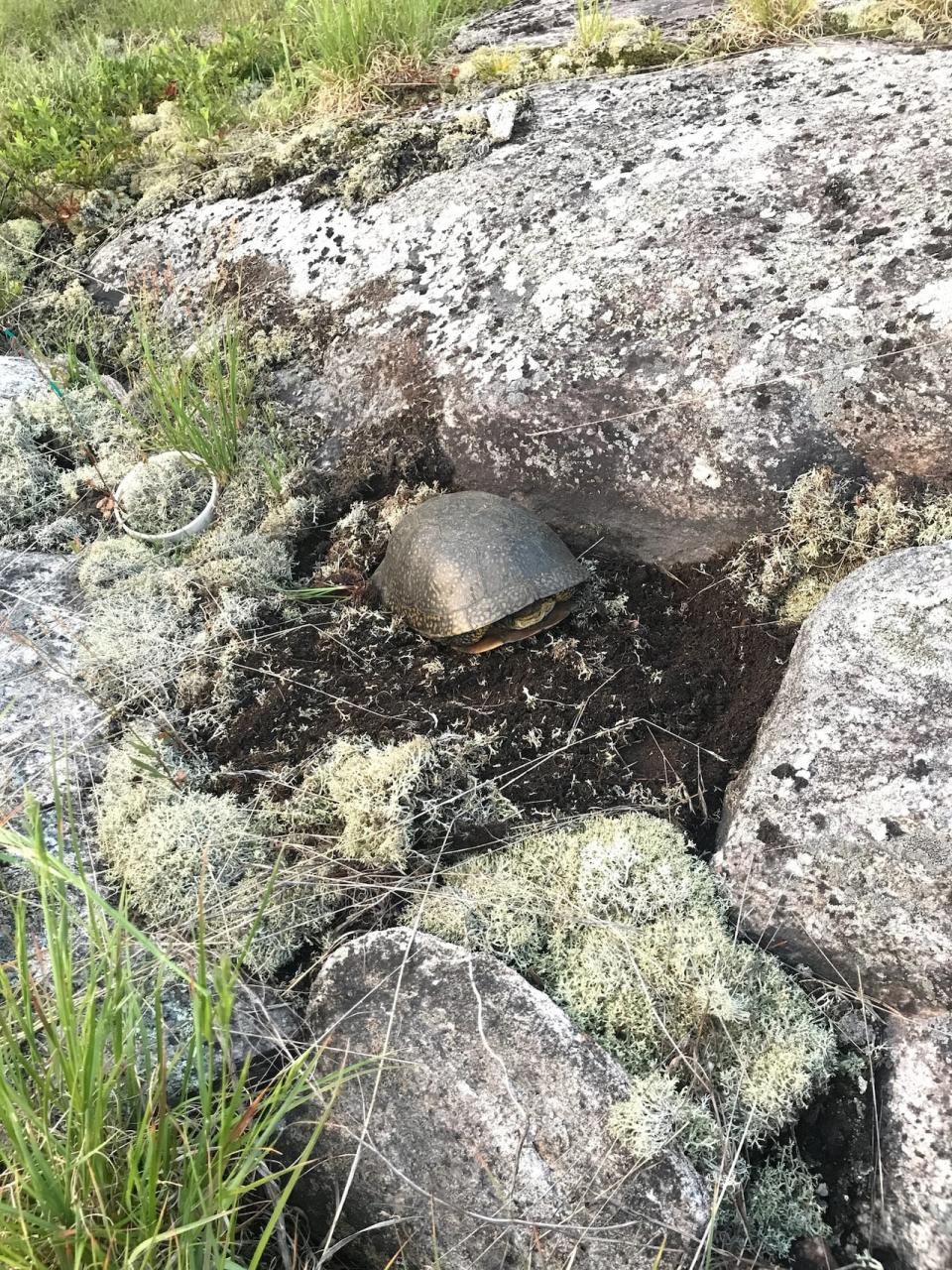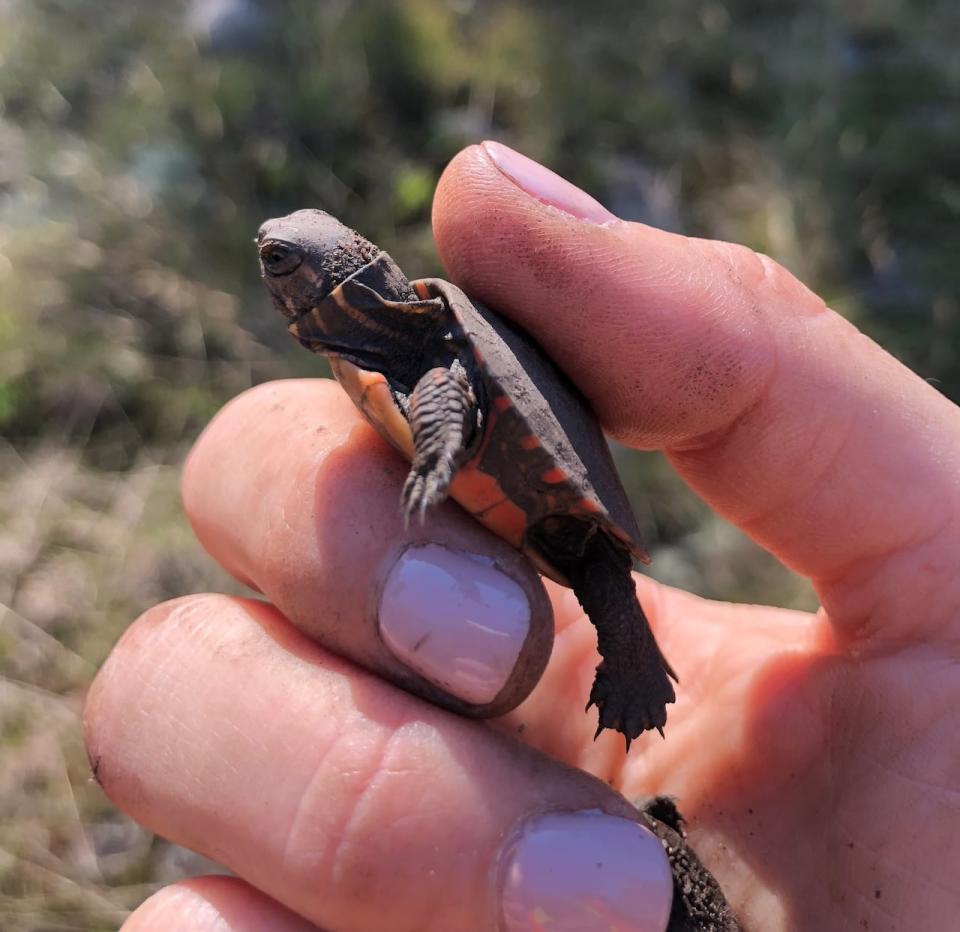Waterloo researchers hope to help turtles lay eggs more safely

Researchers from the University of Waterloo want to give turtles living in the Georgian Bay area a better chance at survival — by building their nests for them.
The nests use moss and lichen and increase a turtle egg's probability of hatching from 10 per cent at a natural site to 41 per cent in the habitat created by researchers.
Chantel Markle is the lead researcher and a professor at the university's faculty of environment. She says the nests could help a number of different turtle species, not just the ones living in the Georgian Bay area.
"So in particular, our study was focusing on the Blandings turtle and the Midland painted turtle, but we also have snapping turtles in that region among a couple of other species that could be utilizing this habitat design."
Markle says their nests help keep eggs in a more ideal and stable location.
"Often we see turtles nesting along the sides of a road and this is really dangerous for mom because she's likely to be hit by a car," she said, adding that once they hatch, the baby turtles would be at risk of being hit by a car too.

Blanding's turtle at new habitat created by researchers from the University of Waterloo. (Hope Freeman/McMaster University)
Markle says there are two main properties that make an ideal nest.
"The first is temperature. We want temperature to be really stable so they didn't get as cold during the night as the natural sites," she said.
"The second thing was the sites that we built, they were able to drain really well. So after it rained, their water would drain through the nest and it wouldn't pool because we don't want the eggs sitting in water."
What's in it for humans?
Markle says endangered turtle species like the ones they're hoping to help are suffering from habitat loss.
"Removing habitat and building and development and expanding our road networks has been really detrimental to our turtle species," she said, adding that the effects of climate change have also made it difficult for the turtles to find appropriate locations for their nests.
Andrew Holland from the Nature Conservancy of Canada says projects like this one are giving turtle species hope for long-term survival.
"The fact is the issues of habitat loss and climate change require everyone pulling on the rope and it requires a whole of society approach."

The research will help babies like this painted turtle have a better chance at survival in the midst of habitat loss. (Chantel Markle/University of Waterloo)
Holland said for all the researchers are doing to help build safe nests, turtles will give back to humankind too.
"They're the unsung hero. They perform the role of the wetland janitor," Holland said.
"They eat dead bugs, they eat dead branches and plants and things like that. They also consume and clean out bad bacteria from our wetlands. They clean out the dead branches, dead bugs and that's good for our communities because they're like a water filter for wetlands."

